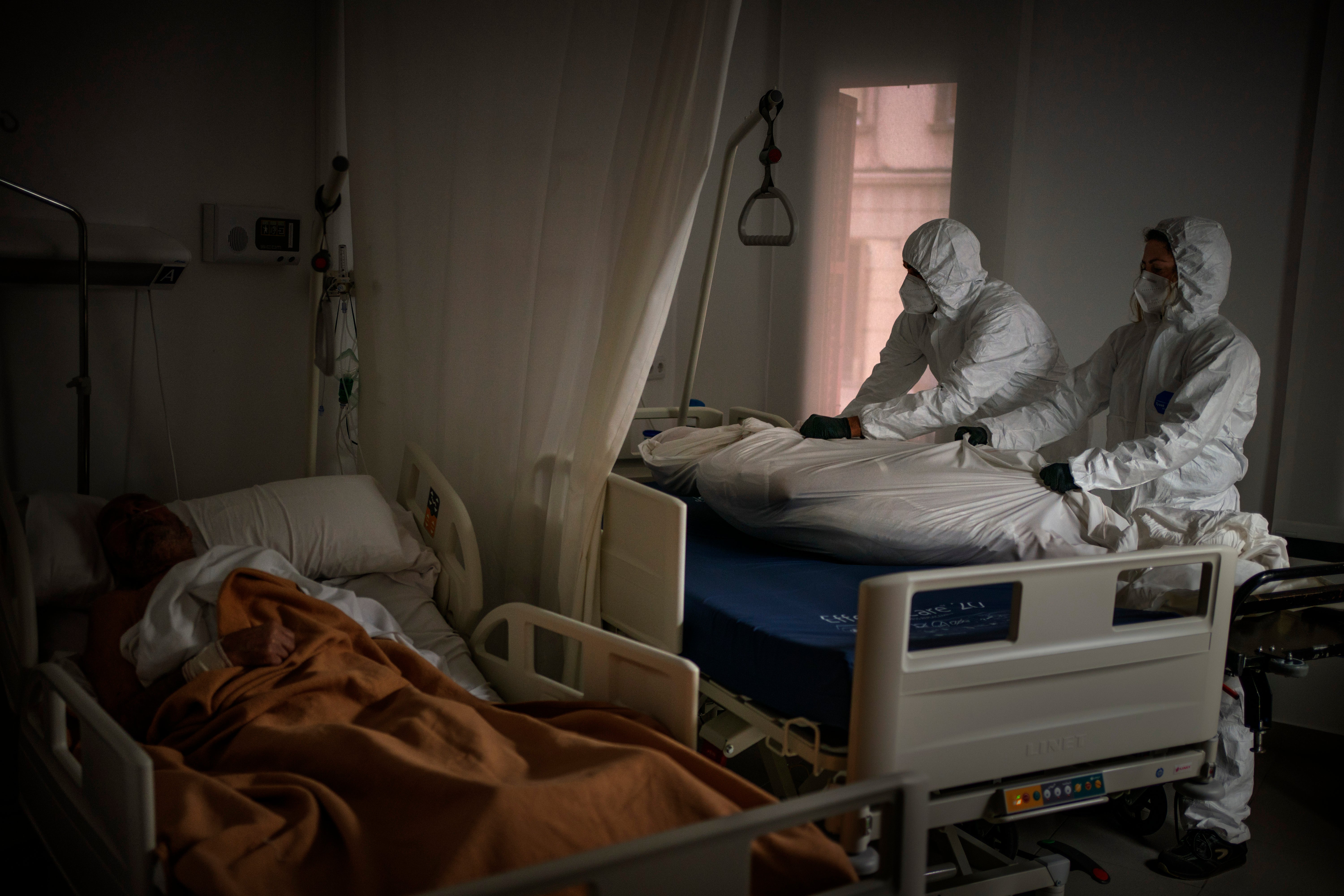A pandemic atlas: Spanish system fails, and the elderly die
In 2020, Spaniards have normalized things unimaginable only 12 months before

Your support helps us to tell the story
From reproductive rights to climate change to Big Tech, The Independent is on the ground when the story is developing. Whether it's investigating the financials of Elon Musk's pro-Trump PAC or producing our latest documentary, 'The A Word', which shines a light on the American women fighting for reproductive rights, we know how important it is to parse out the facts from the messaging.
At such a critical moment in US history, we need reporters on the ground. Your donation allows us to keep sending journalists to speak to both sides of the story.
The Independent is trusted by Americans across the entire political spectrum. And unlike many other quality news outlets, we choose not to lock Americans out of our reporting and analysis with paywalls. We believe quality journalism should be available to everyone, paid for by those who can afford it.
Your support makes all the difference.Patiently lining up, distanced, to buy bread. Watching grandchildren grow via screens. Cheering for a soccer team miles away from the stadium. Gathering for dinner, in reduced groups, at 7 p.m. — early enough so the party can be wrapped before curfew hits.
In 2020, Spaniards normalized things unimaginable only 12 months before. They also rediscovered how expressive eyes can be; mask-wearing is mandatory and widespread.
But 2020 also will go down as the year in which an unknown virus shook the foundations of the social contract and exposed a system that failed to prevent so many deaths.
By March 13, when Spain announced a state of emergency, the virus already had been creeping in for weeks. At first, it appeared to have entered with sun-seeking vacationers and soccer fans returning from a game in Italy. But people who died of pneumonia as early as February were later confirmed to have been infected with the new coronavirus.
Two weeks after the first serious outbreaks hit Europe, Spain followed the Italian rulebook step by step, leaving most people secluded at home and paralyzing the economy.
Politicians keep repeating that the system didn’t collapse during that first wave, when the country recorded 929 deaths in a single day. Many show pride in the “miracle” of multiplying hospital beds and intensive-care units to cope with the ill.
But ask health professionals and they will tell you that the actual cost was overworked staff who were sickened more than anywhere else in the world and suffered a huge emotional toll.
Universal health care has been the backbone of Spain’s welfare state for decades. If officials in charge weren’t able to foresee an epidemic that was slowly but steadily morphing into a pandemic, something clearly went wrong. And it took weeks for doctors and nurses to receive vital protective equipment.
But perhaps the most tragic aspect of all was discovering how a rapidly aging society was unable to protect its elderly At least 20,000 died in nursing homes during the first three months — overwhelmed hospitals turned away the very women and men who had lifted Spain out of the Franco-era isolation and paid a lifetime of contributions to its social security system.
And yet despite the increasing mistrust in the system, Spaniards showed an exemplary capacity for endurance and resilience. There were rulebreakers, just like everywhere else, among young people who insisted on partying, quarantine-skippers and virus deniers, along with opportunistic shows of political sectarianism.
But the country as a whole put up with arguably the world’s most uncompromising nationwide lockdown. For weeks, Spain stayed at home and sacrificed its economy in a way that will probably burden its future for years.
The virus spread came to a near-total halt. The prime minister declared victory.
But eager to reopen, the tourism industry lobbied the government. People hurried out, eager to reunite with loved ones and make up for the lost time. It was meant to be a different summer, but a summer after all.
Very soon, contagion shot back up, this time placing Spain at the forefront of the resurgence in Europe. Then came hours of parliamentary debates, thousands of protocols for everything from re-opening hotels to properly handling COVID-19 corpses, and pledges to do better. But as the year draws to a close, no standardized and effective test and trace system has been rolled out nationwide.
Politicians blamed rule breakers and, with some of their measures, stigmatized the poor who couldn’t afford to isolate or work from home. Some even went as far as blaming the “lifestyle” of migrants.
Experts, who are demanding an external and independent investigation, blame a mix — a rush to reactivate the economy, bars and restaurants prioritized over schools or parks, plus observance of rules in public but relaxation indoors.
But did political incapacity also play a role? Some Spanish regional governments showed an embarrassing short-sightedness, trying to save money by shorting expenditures for primary care or to fund contact tracing.
By mid-December, Spain had reported 3,747 cases per 100,000 population.
At year's end, Spaniards were showing a lack of faith in their institutions, with the doubts most apparent in official polls that found that 55% were suspicious of any COVID-19 vaccination and would not rush to get one.
.